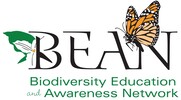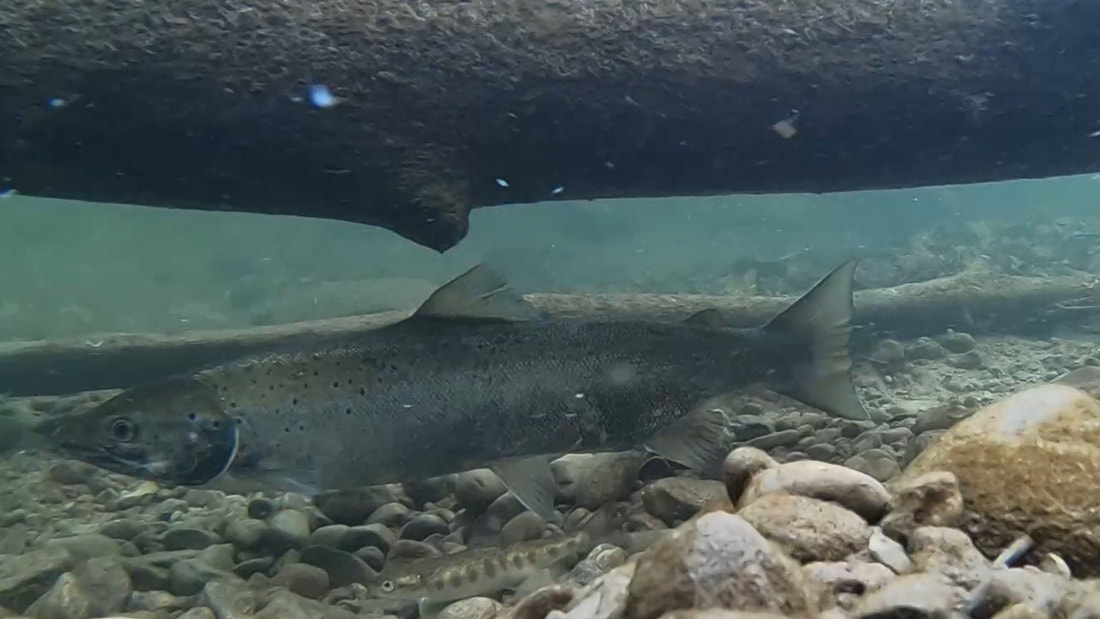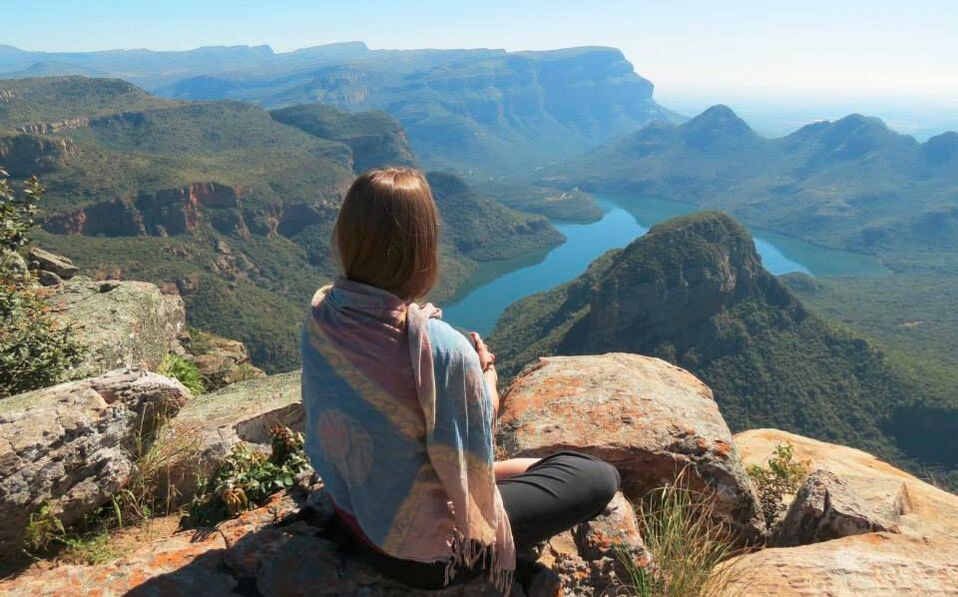|
By: Ben Teskey, OFAH Atlantic Salmon Restoration Program Coordinator Picture this: forests, savannas, tall grass prairies, and wetlands full of wildlife; lakes, rivers, and streams teeming with fish. One of these fish, the Atlantic Salmon, is so abundant you could cross rivers by walking on their backs! This is the picture early European explorers and settlers described from when they first arrived in the Lake Ontario region in the 17th and 18th centuries. The air and water were clean, and the ecosystems were healthy, productive, and full of biodiversity. Capable of reaching sizes well over 1 metre in length, Atlantic Salmon (Salmo salar) is the third-largest member of the salmon family (which includes salmon, trout, freshwater whitefish, char, and grayling). Atlantic Salmon arrived in Lake Ontario from the Atlantic Ocean around 12000 years ago at the end of the last glacial period. Here they found suitable habitats to support their survival, growth, and reproduction. Adult Atlantic Salmon live in big water like the Atlantic Ocean, or in large lakes like Lake Ontario, before migrating up cold-water streams to spawn. Female Atlantic Salmon lay eggs in gravel nests called redds, where the eggs are fertilized, then develop and hatch. The juvenile salmon live in the cold-water stream growing big on a diet of benthic macroinvertebrates before swimming back downstream to the big water to continue to grow on a diet of fish. The Lake Ontario Atlantic Salmon became very important members of the ecological community. For thousands of years, they were a valued food source for Indigenous People. The European settlers also greatly valued Atlantic Salmon. With European settlement came many drastic changes to the land and water. Deforestation increased water temperatures, reduced water quality, and disrupted food webs. Dams constructed to power mills broke the connection between the lake and the spawning grounds, reducing Atlantic Salmon reproduction. Pollution further reduced water quality and at times was severe enough to cause episodes of concentrated rapid fish mortality. As the human population around the lake grew, fishing pressure increased, exasperated by commercial fisheries harvesting not only for local food markets but also for markets outside of the area. Deforestation, dams, pollution, and overfishing are the four major factors that negatively impacted the Lake Ontario Atlantic Salmon population. Any efforts made to conserve the population prior to their extirpation in 1898 were too little too late. In only 100 years, this salmon population went from being hugely abundant for thousands of years to completely gone from Lake Ontario! Overarching the four major factors that contributed to the extirpation of the Lake Ontario Atlantic Salmon is a lack of understanding and connection between the European settlers and the natural world. It can be easy to judge the European settlers harshly or to feel a sense of guilt. I personally believe that these emotional responses are of little value and can even have a crippling or demoralizing effect. Instead, I believe this story (and the many similar ones) hold a lot of lessons for us. We can’t change the past, but we can learn from it and use it to shape a better future! Instead, the story of the loss of the Lake Ontario Atlantic Salmon population should motivate us to take on the responsibility to be better stewards (knowledgeable and intentful caretakers) of the world. As stewards, we can protect and restore the health and integrity of our terrestrial and aquatic ecosystems and bring back lost species such as the Lake Ontario Atlantic Salmon. I believe that in order to be better stewards of this Earth, we must have a connection to and understanding of the natural world; After all, it is difficult to care for something that we don’t understand. We live in a time where learning about nature can be easy with books, videos, and internet resources at our fingertips. While these are valuable learning tools, nothing is a better teacher than spending real-time in nature. Being in nature is good for our physical, mental, and spiritual well-being, but direct outdoor experience also allows us to make observations that can increase our overall awareness of the world around us. In turn, this will strengthen our connection to nature which is crucial to being good environmental stewards. There are many ways to enhance your connection with nature, but these are my top 5 routines for nature connection: 1. Slow Nature Walks: While I do like to like to get physical exercise with a good brisk walk or a nice trail run, I make sure I spend some time slowly walking in nature, where I enliven my senses, smelling the flowers and trees, listening to birds, feeling the temperature of the air, and looking at the intricate layers of nature around me from the tallest trees and mountains to the smallest lichens and tiny critters. 2. Sit Spot: 3. Wildlife Tracking: Animals leave tracks and signs behind them, known as spoor. This can include footprints, bent and broken vegetation, scat, feathers, nests, feeding remnants, territorial markings, climbing marks, kill sites, dropped antlers, and bones. We can learn a lot about other living creatures and their non-living environment by sharpening our observation skills and awareness. Walking in the tracks of an animal can help you see the world through their eyes. The more I track, the more I understand how everything, and I mean everything, is connected. 4. Art of Questioning: Knowledgeable answers are good, but we seldom get to them without great questions. Returning home (to some research resources) with questions from your time in nature can lead you to: learn new answers, deepen your understanding, ask further questions and build stronger connections 5. Participation in Stewardship: Planting and tending to trees, shrubs, and native plant gardens, and collecting garbage are a few of the individual stewardship actions you can take in your life. Group stewardship actions are a great place to meet interesting people, learn from others, build your social and professional network and have fun. Most importantly, by being an active steward, you take on the responsibility to help make the world a better place. Find volunteer stewardship events through your local conservation organizations. By deepening our connection with nature, we can enhance our understanding and care for the earth, which in turn can transform us into better stewards of the world around us!
The Lake Ontario Atlantic Restoration Program (www.bringbackthesalmon.ca) is made possible through the financial support from the program lead sponsor Ontario Power Generation. The story of the loss of Lake Ontario Atlantic Salmon, the restoration program, and the need to be better environmental stewards is shared with thousands of students yearly through our Classroom Hatchery program. This part of the program is funded in part by the Ontario Trillium Foundation.
0 Comments
Leave a Reply. |
AuthorWrite something about yourself. No need to be fancy, just an overview. Archives
July 2024
Categories |



 RSS Feed
RSS Feed
